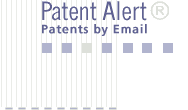A method for creating three-dimensional models of intra-oral scenes and
features. The intra-oral scene is illuminated by a two-dimensional array
of structured illumination points, with anti-aliasing achieved by using
stored two-dimensional patterns of pixels for anti-aliasing. Using a
single camera to form images reduces the amount of apparatus necessary to
introduce into the patient's mouth. Three-dimensional models are obtained
from the single image by triangulation with a stored image of the
structured illumination onto a reference surface such as a plane.
Alternative methods include the use of "bar-coded" one-dimensional
patterns.



